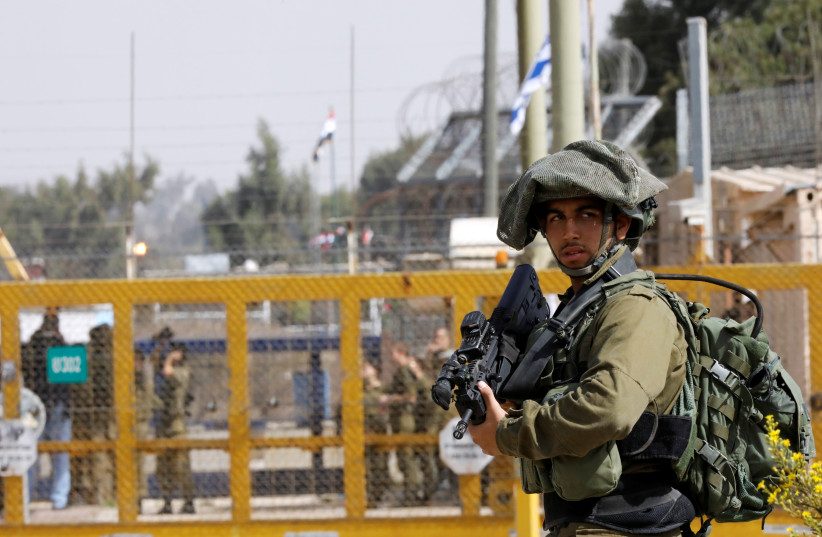Iran has worked with the Syrian regime for decades, but in recent years Iran sought to establish bases and sent members of the IRGC to Syria.
SETH J. FRANTZMAN

Israel may face a crossroads in its Syria policy in the next year as countries in the region seek to bring Syria back into the fold of Arab states and prefer that the instability and chaos that has underpinned the Syrian civil war for a decade, end with the Syrian regime cemented in power.
This is not a simple process because the United States and the Syrian Democratic Forces still have power east of the Euphrates, while Turkey controls and occupies a swath of northern Syria. There are still refugees and the Syrian regime is incredibly weak and poor, meaning that Iran and Russia have a lot of influence.
It is Iran’s influence that concerns Israel. Iran has worked with the Syrian regime for decades but in recent years Iran sought to establish bases and sent members of the IRGC to Syria, as well as began to support militias and the deployment of Hezbollah to areas close to Israel across from the Golan.
These myriad of tentacles of Iranian influence have been met with pushback from Israel. Back in August 2017 former Israel Air Force head Maj. Gen. Amir Eshel said that Israel had struck convoys destined for Hezbollah in Syria nearly 100 times in five years. Eshel is now Director General of the Ministry of Defense. In January 2019 former Chief of Staff Gadi Eizenkot told the New York Times that Israel had struck thousands of Iranian targets in Syria. A simple calculation will tell you that an increase from nearly 100 attacks in five years, to hitting thousands of targets by the end of 2019 represents a major increase in activity.
The increase coincided with Iran’s increased entrenchment in Syria in 2018 and 2019. Iran established a drone base at T-4 base in Syria and used a drone to fly into Israeli airspace in February 2018. It used another drone during the conflict this May, again to enter Israeli airspace near Beit Shean.
if(window.location.pathname.indexOf(“656089”) != -1){document.getElementsByClassName(“divConnatix”)[0].style.display =”none”;}else if(window.location.pathname.indexOf(“634517”) != -1){ document.getElementsByClassName(“divConnatix”)[0].style.display =”none”; var script = document.createElement(‘script’); script.src = ‘https://player.anyclip.com/anyclip-widget/lre-widget/prod/v1/src/lre.js’; script.setAttribute(‘pubname’,’jpostcom’); script.setAttribute(‘widgetname’,’0011r00001lcD1i_12258′); document.getElementsByClassName(‘divAnyClip’)[0].appendChild(script);}
Iran also tried to bring its advanced air defense 3rd Khordad system to T-4 base in Syria in April 2018. In the fall of 2019 it sent a “killer drone” team of Hezbollah operatives close to the Golan and Israel struck the drone team in August of that year. It should be noted that in September, Iran used drones to attack Saudi Arabia.
Satellite images that appeared increasingly in media in 2018, including of an airstrike near Albukamal and sites near Damascus, pointed to how far the Iranian program had spread. Iran built a base called Imam Ali on the Syrian border with Iraq, for instance. Even as far back as November 2017 the BBC revealed, based on western intelligence, that Iran was building a “base situated at a site used by the Syrian army near El-Kiswah, 14 km (8 miles) south of Damascus, and 50 kilometers (30 miles) from the Israeli border.”
Now things have changed, it appears. When Naftali Bennett was defense minister, he indicated Iran was drawing down forces in Syria in May 2020. Recent reports say Iran may be reducing forces again, but nevertheless continue to have major influence over parts of Syria. There have also been two rounds of US airstrikes on pro-Iran groups in Syria, and these groups are now threatening US forces at Omar field and Conoco in eastern Syria.
Meanwhile, areas around Dara’a in Syria, which the Syrian regime retook in 2018 and where the regime and Russia were supposed to be reconciling with former rebels, have continued to suffer instability and former rebels have apparently attacked regime elements.
Reports also say that Israel is gearing up to get more advanced technology from the US in the case of a rising Iran nuclear threat. France’s envoy to Israel said that Iran should not possess a nuclear weapon this week. Meanwhile, Lebanon is in chaos over economic problems and the rise of Hezbollah, and Iraq is also suffering from pro-Iran militias that are becoming more powerful than the government.
This wider context means that while countries like Egypt are pushing for normalization with Syria and are talking with Jordan and Iraq and the Gulf about how Syria might be welcomed back to the Arab world, and thus pried away from Turkey or Iran, there are questions about what this means for Israel
First of all there are questions about Israel’s freedom to operate in Syria against threats, a campaign called the “war between the wars” or “campaign between the wars.” There are questions about Iranian entrenchment and the “road to the sea” that Iran sought to establish from Albukamal to T-4, Damascus and then Beirut. There are major questions about what the US will do next in Syria and also what Turkey and Russia have in mind.
With so many balls in the air in terms of questions, Israel’s strategy with the new government in office in Jerusalem likely will be closely examined. This strategy has sought to reduce Iranian entrenchment and threats. The relative quiet in Syria in relation to Israel could indicate that this is happening, but it could also indicate a momentary pause or an Iran that is distracted for now. Israel will need to coordinate with the Gulf, Egypt, Jordan and the US in terms of what may come next on this front.
Content retrieved from: https://www.jpost.com/middle-east/iran-in-syria-and-israeli-strategy-choices-analysis-674060.